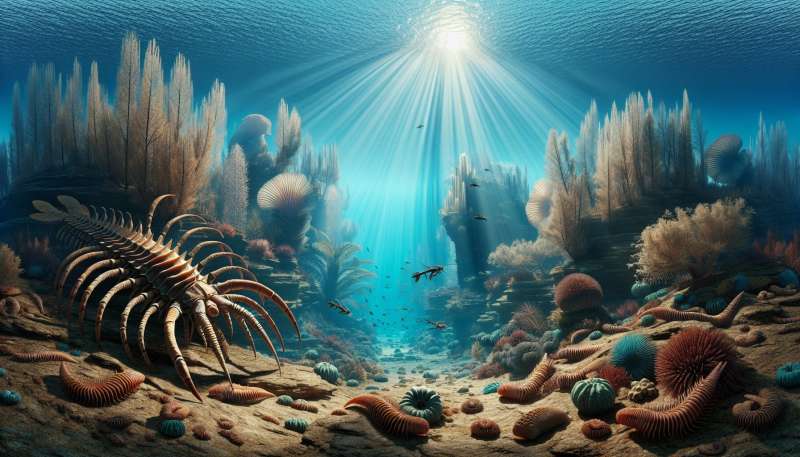
Introducing the Silurian Period
The Silurian Period, spanning 443.8 to 419.2 million years ago, succeeded the Ordovician. It's named after the Silures, an ancient Welsh tribe, reflecting where geologist Roderick Murchison first studied the period's rock strata.
Silurian Climate and Sea Levels
During the Silurian, Earth saw stabilizing climates and rising sea levels, creating extensive shallow inland seas. This period was marked by a warmer climate compared to the preceding icehouse conditions of the late Ordovician.
Evolutionary Flourishing in Silurian
The Silurian Period was a time of significant evolutionary innovation. Coral reefs first appeared, and the first vascular plants, Cooksonia, emerged on land, laying the groundwork for future terrestrial ecosystems.
Silurian's Marine Life Explosion
Silurian seas teemed with life. Notable marine organisms included the enigmatic eurypterids or 'sea scorpions,' some of which were the largest arthropods ever to have lived.
Silurian's Early Terrestrial Animals
The Silurian also saw the first confirmed terrestrial animals. Fossil evidence suggests centipede-like creatures and early arachnids ventured onto land, pushing the boundaries of life beyond the oceans.
The Silurian-Devonian Boundary
Marking the end of the Silurian, the boundary with the Devonian Period is characterized by a major extinction event. This event, however, was less severe compared to others, like the Ordovician-Silurian extinction.
Silurian's Geological and Fossil Impact
Silurian rock formations are crucial for understanding ancient Earth. Fossils from this period, including well-preserved coral, brachiopods, and trilobites, offer invaluable insights into early marine ecosystems and the colonization of land.Silurian’s Giant Arthropod
Some eurypterids grew up to 8 feet long, making them among the largest arthropods ever to roam the Earth.
Who named the Silurian Period?
Ancient Welsh tribe
Geologist R. Murchison
After the Devonian
Company